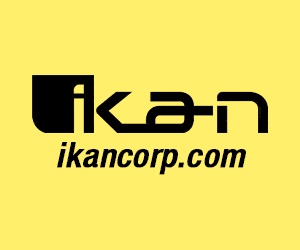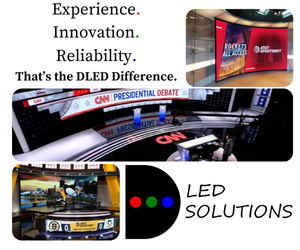Dak’s Take: Local broadcasters are bleeding trust while ‘news influencers’ gain voice

Subscribe to NCS for the latest news, project case studies and product announcements in broadcast technology, creative design and engineering delivered to your inbox.
The trust crisis in American news isn’t new. We’ve watched national outlets hemorrhage credibility for years, their poll numbers dropping like Nielsen ratings in a streaming world. Local news was supposed to be different — the safe harbor, the trusted neighbor, the last place Americans could agree on something.
Turns out, that harbor is springing leaks.
Trust in local news fell from 80% in March to 70% today, according to the latest data from Pew.
Ten points. In months. Every demographic, every political stripe, every age group. Even Republicans — historically the most trusting of local media — down 10 points.
The center of gravity for credibility is shifting. And it’s not shifting toward the anchor desk.
The thesis broadcasters don’t want to hear
Local broadcasters are losing their trust advantage because they’re operating like it’s 2016, while “news influencers” are winning the relevance game by delivering what audiences actually crave: authenticity, immediacy and connection.
Not objectivity. Not production value. Not “Coverage You Can Count On” or “First Alert Days.”
Connection.
One in five U.S. adults now regularly gets news from influencers on social media. Among adults 18-29? Nearly 40%. And most aren’t seeking these voices… they’re encountering them algorithmically and in many cases, passively. But this still leads to habits.
Meanwhile, 20% of all adults get news on TikTok. Only 3% did in 2020. Among under-30s, it’s 43%. More than half of TikTok users call it a news source.
A platform designed for dance challenges is now a primary on-ramp to current events for millions. In fact, TikTok is in the midst of its pivot to “long form content,” in its case, that means content over one minute long. With more editing, more information.
Why the slide?
The usual suspects: staffing cuts, homogenized content, syndicated segments stretched across 15 markets, reporters covering three counties instead of three neighborhoods. Fewer school board meetings, more nationalized story selection that could air in Topeka or Tampa without changing a word.
When every station covers the same three stories, “local” stops being a mission. It becomes a format.
But structural issues don’t explain the velocity.
There’s a fundamental misalignment between what broadcasters think builds trust and what actually does.
Broadcasters doubled down on production polish while younger viewers equated polish with spin. They clung to formulaic storytelling that killed authenticity. Consolidation created sameness. A Columbus station looks like a Colorado Springs station, and viewers sense it even if they can’t articulate why.
The credibility gap nobody wants to discuss? Viewers conflate ownership with agenda. Shrinking newsrooms signal lack of substance, not efficiency. Overreliance on police press releases and quick-turn crime coverage undercuts the authority broadcasters claim.
Can trust survive when stories feel pre-baked, sources feel institutional and presenters feel interchangeable?
The data says no.
Meanwhile, the upstarts
What people tell Pew about why they trust influencers: better understanding, faster updates, authenticity, fresh angles.
Translation: mobility, clarity, personality. Three things broadcasters used to own.
These influencers aren’t playing legacy rules. They’re not waiting for 6 p.m. They’re not workshopping every line to remove any hint of humanity. They’re showing up in kitchens, cars, dorm rooms — wherever news happens or wherever they are when it breaks — explaining things like knowledgeable friends, not authority figures reading teleprompters.
For younger audiences, the appeal is simple: news that feels human again.
Broadcasters? Still treating TikTok like a side hustle, not a front door. Still running promos for “our app” while influencers are already in feeds, unavoidable and native. Still repurposing B-roll into vertical video instead of understanding the medium demands different storytelling.
The gap is philosophical, yet broadcasters keep treating it like it’s a tech stack problem.
So, what can be done?
If I’m running a local station, I’m asking uncomfortable questions in the morning meeting.
Are we authentic or “on brand”? Because those are increasingly opposite things. Audiences reward vulnerability, context, point-of-view. Real people explaining real things beats anchor-speak. Let reporters be human. Personal voice isn’t a threat to journalistic standards. On social platforms, personality builds trust faster than any graphics package.
Are we present where audiences are, or asking them to come to us? Broadcast treats social platforms like marketing channels. They should be treated like newsrooms. You don’t need a different team for TikTok. You need to recognize TikTok is where the audience lives.
Are we fast and transparent, or waiting to “do it right”? Real-time updates, acknowledged uncertainty, explained process — that’s what influencers do well and viewers expect. “More at 11” doesn’t work when someone with a smartphone has the story at 9:47.
The future of trust won’t belong to whoever has the best graphics package. It’ll belong to whoever feels most real.
It’s a long road ahead
Trust isn’t a sentiment metric. It’s survival.
As younger viewers equate national media and social media as equally trustworthy — or untrustworthy — local broadcasters risk losing their only competitive moat. The “trusted local source” positioning rings hollow when viewers trust TikTok creators just as much, or when they’ve stopped watching because everything sounds the same.
Broadcasters who evolve will thrive. Those waiting for trust to rebound — for audiences to tire of ring light journalism and return to the 6 p.m. broadcast — will wait forever.
The question isn’t whether local broadcasters can win back trust… the question is whether they’re willing to sound and act like the communities they serve instead of the corporations that own them.
For those organizations ready to experiment, audiences are ready with their attention.
Subscribe to NCS for the latest news, project case studies and product announcements in broadcast technology, creative design and engineering delivered to your inbox.







tags
Dak's Take, Pew Research Center
categories
Heroes, Journalism, Voices